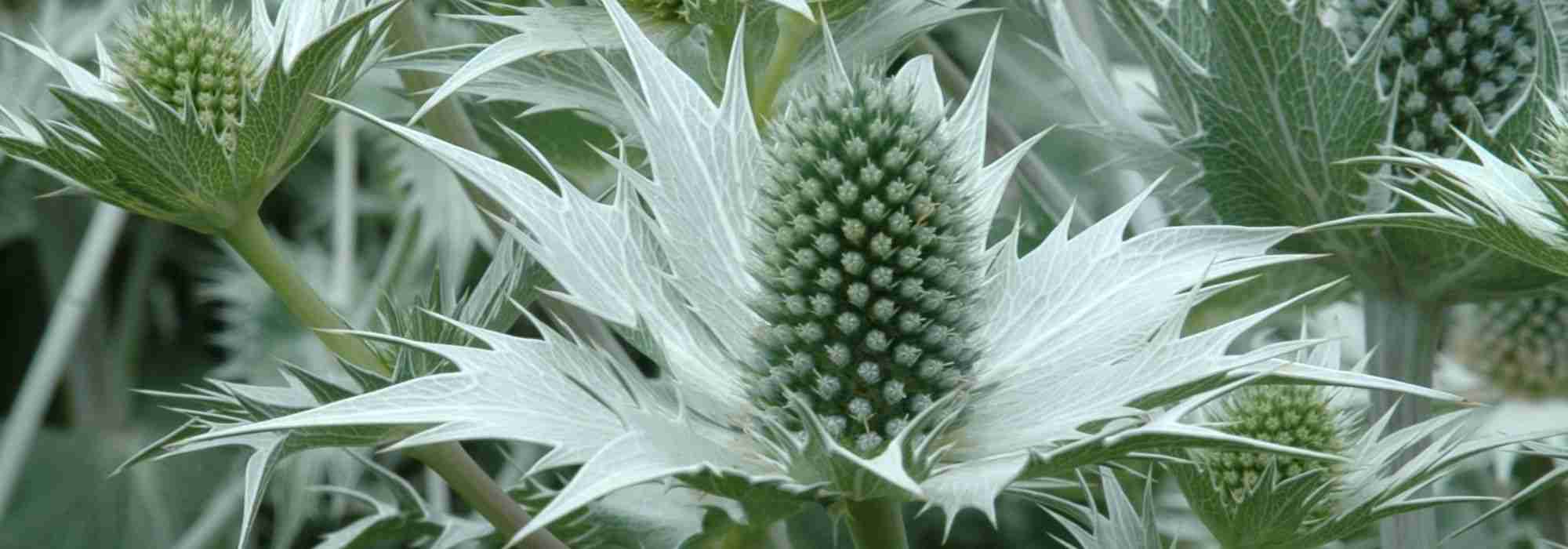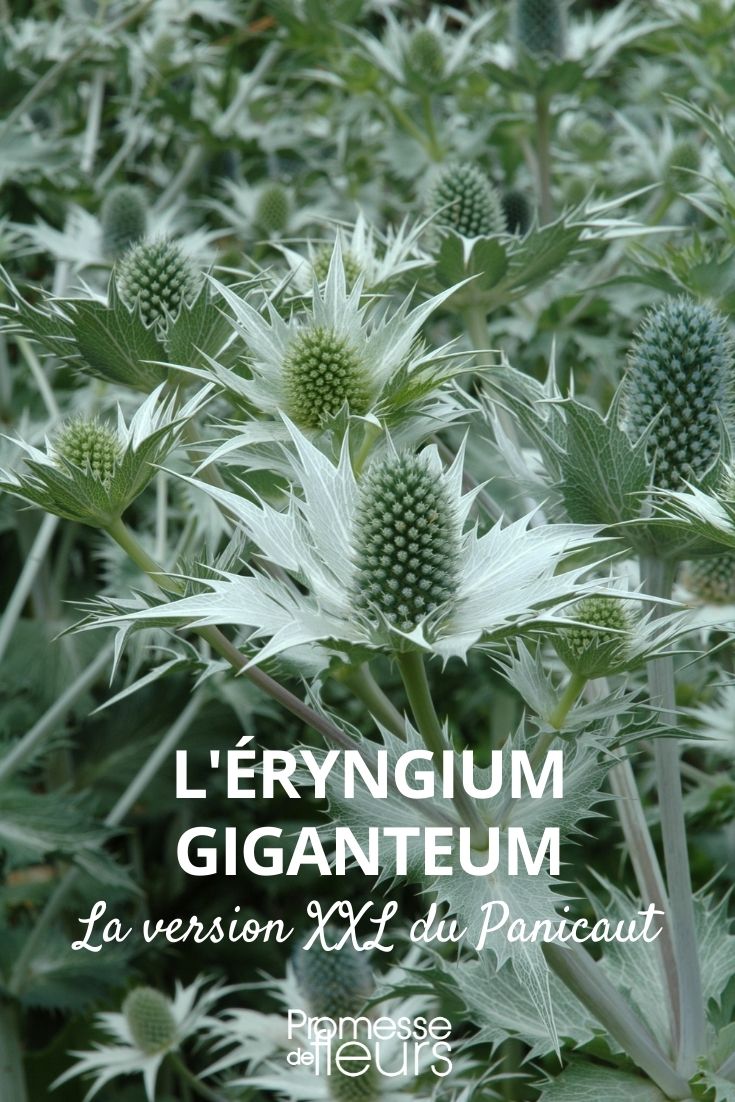
Our video transcription: Eryngium giganteum
The XXL version of the sea holly
Contents
Today, we’re going to talk about thistle, but not just any thistle… a giant blue thistle: Eryngium giganteum or giant sea holly.
A giant Eryngium
This thistle is not botanically speaking a thistle. It is an Eryngium giganteum. We are a bit more familiar with Eryngium planum, which is also known as the sea holly. Here, it is also a Sea Holly but a giant Sea Holly!
This zea holly belongs to the Umbelliferae, now known as the Apiaceae. In this family, we find carrots, fennel, etc., and we also find the Eryngiums.
This plant is native to the regions around the Caucasus, Iran, etc. The Eryngium planum is more commonly found in central Europe, roughly from the European mountains.
Why planting Eryngium giganteum?
It’s a very interesting plant for several reasons:
- It’s a lovely plant! It starts with a somewhat round rosette of leaves that gradually produces floral spikes with umbels of flowers. These flowers will open a bit bluish, with bracts that encircle them and will become increasingly silvery. They are melliferous and nectariferous flowers. They attract quite a few insects, especially butterflies.
- This plant is very graphic and you can collect the dry stems to use as decorative elements. In a dried bouquet, they hold up very well.
- We are in a rock garden, in full sun… naturally, it’s a plant that loves the sun and particularly withstands drought. In fact, it cannot tolerate having its roots in water during winter. So when planting, you can add a little gravel, for example, mixed with the planting soil. This will improve drainage, or simply plant it in perfectly drained soil like sandy soil. It withstands drought very well because the root system will seek water far below. It can draw water without any issues.
- It’s a very hardy perennial (-15/-20°C without any problem) as long as it is planted in well-drained soil. However, it tends not to live very long. After just a few years, it will disappear. But don’t panic! It self-seeds abundantly. Here, the soil suits it perfectly; we are in a rock garden. You can see it has self-seeded here and there. So no worries, the plant gradually establishes itself.
In summary, if you’re looking for a very graphic, beautifully stunning plant that blooms in summer, attracts creatures, butterflies, and also withstands drought extremely well… Think of Eryngiums, consider Eryngium planum for example, or even better, Eryngium giganteum, which is much larger as you can see here. I measure just under 1.70 m, and here we are looking at about 1.20 m in height with a good metre in width. In short, it’s a beautiful plant to adopt in a large rock garden.
- Subscribe!
- Contents
































Comments